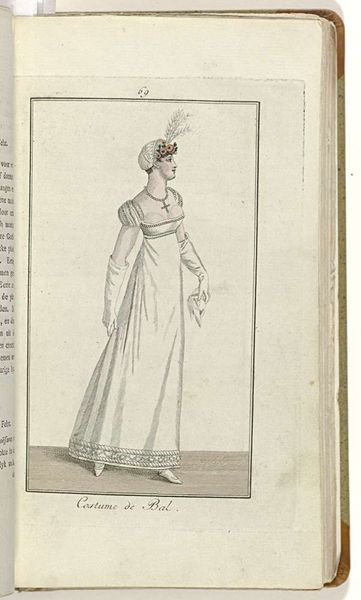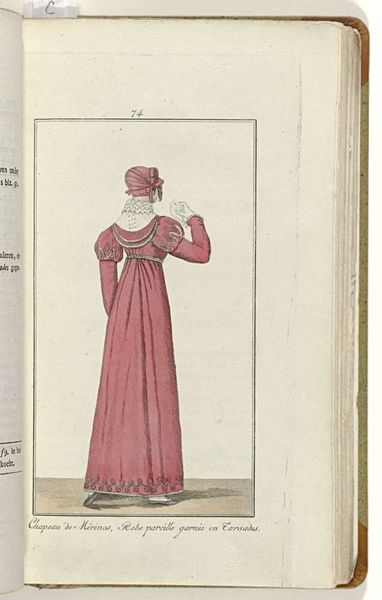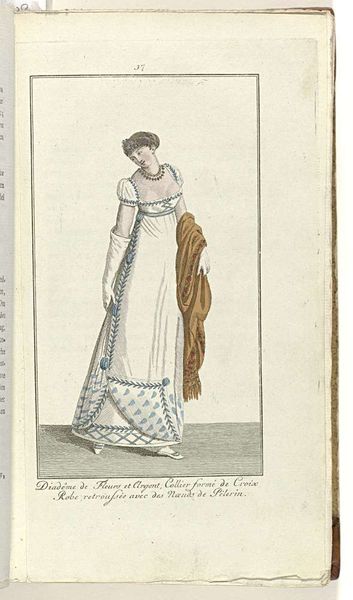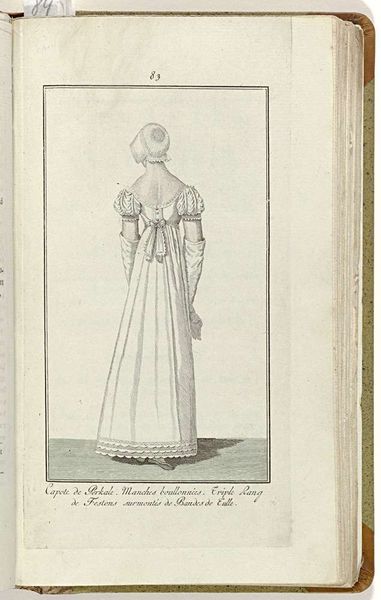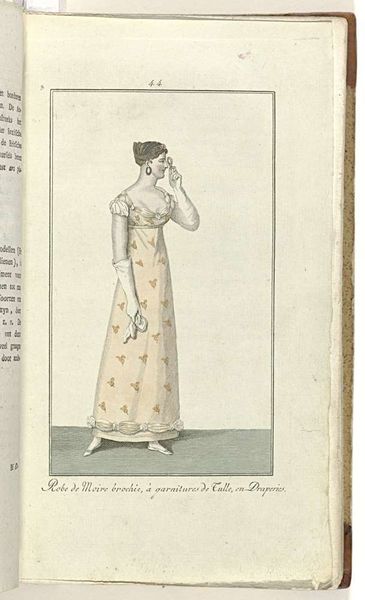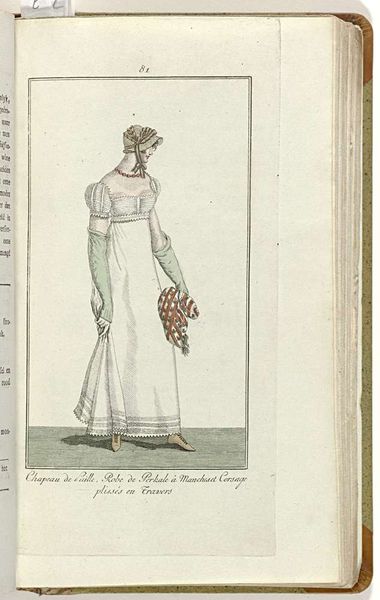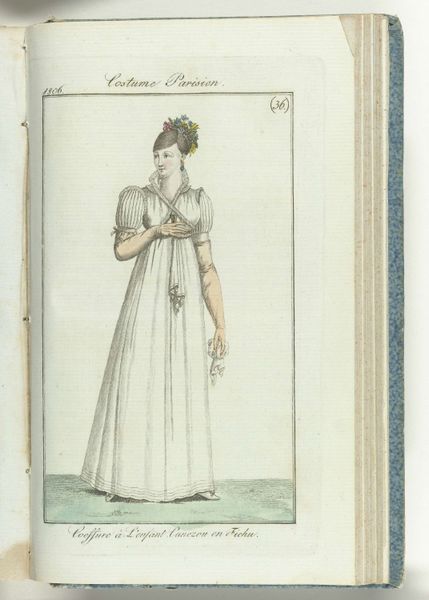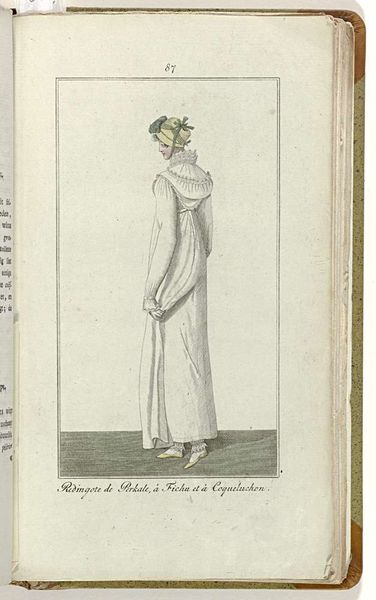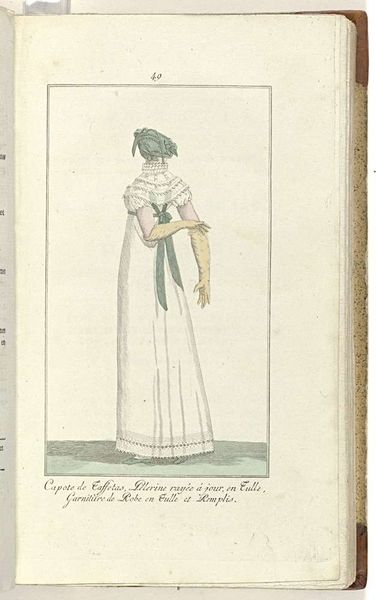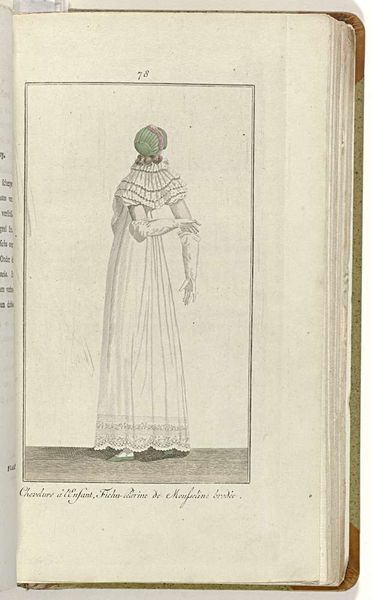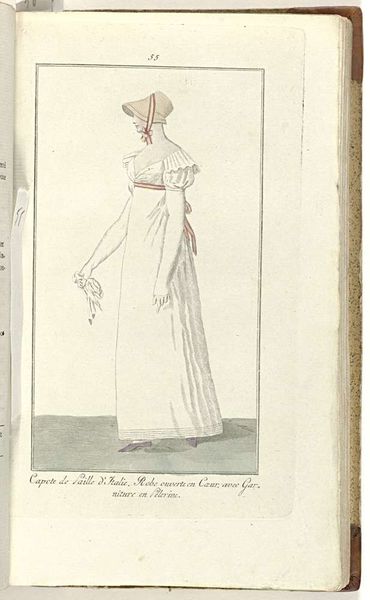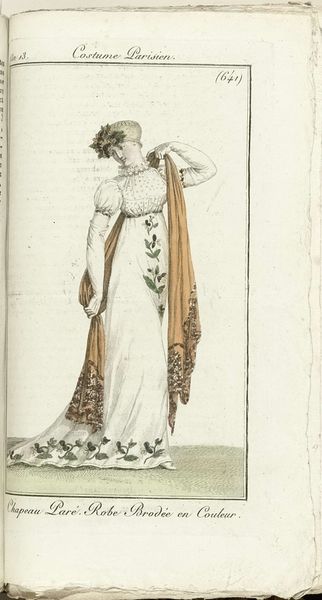
Elegantia, of tijdschrift van mode, luxe en smaak voor dames, Oktober 1808, No. 58: Capote de Taffetas... 1808
0:00
0:00
drawing, paper, ink
#
portrait
#
drawing
#
paper
#
historical fashion
#
ink
#
romanticism
#
watercolour illustration
Dimensions: height 218 mm, width 120 mm
Copyright: Rijks Museum: Open Domain
Curator: This illustration, dating from 1808, is entitled "Elegantia, of tijdschrift van mode, luxe en smaak voor dames, Oktober 1808, No. 58: Capote de Taffetas...", part of an anonymous series showcased here at the Rijksmuseum. It appears to be executed with ink and watercolour on paper. Editor: My first impression is of delicate constraint. The palette is muted, but the columnar composition lends a certain formality, even as the figure twists slightly to engage the viewer. Curator: Interesting choice of words. "Constraint" speaks, perhaps, to the sartorial restrictions of the time but, more importantly, the modes of production of textiles. Fabric such as the fine taffeta was costly, handmade and subject to intense scrutiny in its making by workshop owners who maintained hierarchies that valued expertise and exploited labour, and by those who purchased them to visibly display and perform status. The lace trims were also most likely painstakingly made, by hand, making this garment an exorbitant purchase and one which would also take considerable labor to create and maintain. Editor: The trim offers a delightful visual counterpoint, almost fracturing the imposing central column created by the dress. Note the interplay of shadow and light that brings out the crisp edges of each loop. Semiotically, the repeated curves act almost like linguistic pauses that break up any imposing feeling of class in the composition by inviting a closer examination, thus questioning an assertion of upper class elegance by playfully disarming the gaze. Curator: While I acknowledge the visual dynamic, I argue that this careful design underscores social divisions rather than disrupts them, which is achieved because those materials were costly in both purchase price and labor. For the rising bourgeoisie, fashion periodicals helped to democratise access to stylistic codes by revealing current silhouettes. Such periodicals fuelled a consumerist culture keen on imitating upper classes, yet those same social strata frequently enacted the oppression needed to uphold this elegance via gendered and raced exploitation in colonial manufacturing of fabrics. Editor: An astute point. The soft, Romantic aesthetic does mask some harsh economic realities. This work's enduring strength arises not just from how it manifests beauty and luxury through its fine strokes, colours and design elements, but it serves as an artefact through which to consider labor issues of past and present industries. Curator: Indeed, our divergent readings highlight fashion’s duplicitous role—both mirror and mask, pleasure and burden.
Comments
No comments
Be the first to comment and join the conversation on the ultimate creative platform.
